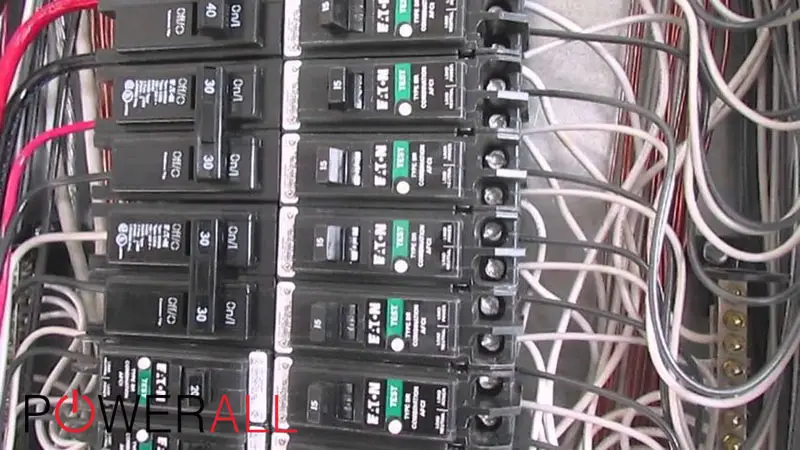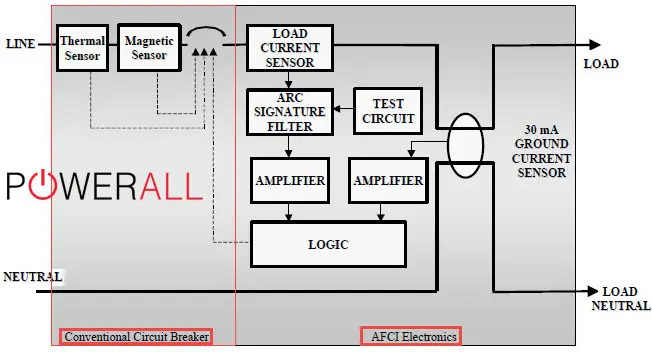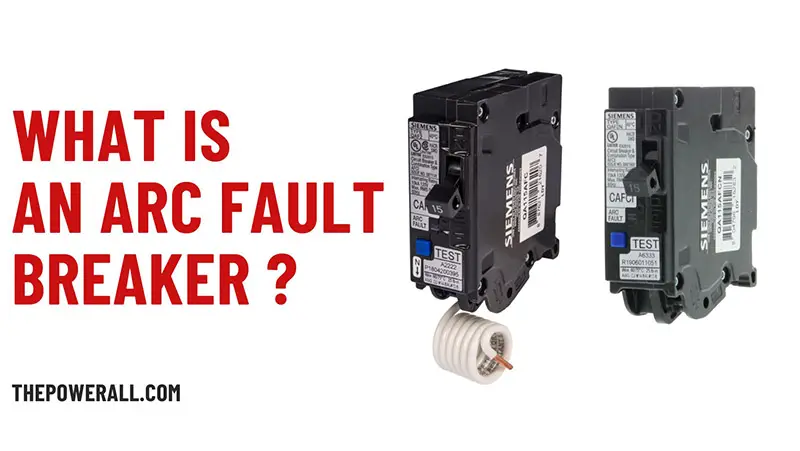Where are arc fault breakers required? This article will walk you through everything you need to know about this protective device, from how it works to its benefits in protecting your home from electrical fires. Let’s dive right in!
What Is An Arc Fault Breaker?
An arc fault breaker, also known as an Arc Fault Circuit Interrupter (AFCI), is an electrical safety device designed to detect and interrupt dangerous arc faults in residential electrical wiring.

Arc faults occur when an electrical current jumps an unintended gap between two conductors, creating a spark that can ignite surrounding materials, such as wood framing or insulation.
AFCIs are typically installed in the electrical panel and can be used to protect specific circuits or the entire electrical system. While AFCIs are not required by the National Electrical Code (NEC) for all circuits, they are becoming increasingly popular as a safety measure for residential homes.
How Does An Arc Fault Breaker Work?
An arc fault circuit interrupter breaker is designed to detect and respond to arc faults, which occur when electrical wiring or devices malfunction and produce sparks or arcs. It works by constantly monitoring the electrical current flowing through its protecting circuit.
When it detects an abnormal current pattern consistent with an arc fault, it immediately interrupts the electrical current to prevent a potential fire. The AFCI breaker can distinguish between a harmless arc and a dangerous one, and responds only to the latter.

This is important because many electrical devices, such as power tools and motors, can create harmless arcs during normal operation. AFCI breakers are required in new residential construction in certain areas, as they provide an additional layer of safety against electrical fires caused by ground fault.
Why Should You Use An AFCI Breaker?
Using an arc fault breaker in your home can provide an added level of protection against electrical fires. These breakers can detect and interrupt arcing faults within the electrical system.
Arcing faults can occur when there is damage to electrical wiring or appliance cords, such as from nail or screw punctures, aging or deteriorating insulation, or even animal damage. Without proper protection, these faults can cause fires that may spread quickly and cause significant damage to your property.
By using an arc fault breaker, you can help prevent these fires by quickly interrupting the electrical current and cutting off the flow of electricity to the affected circuit. This protection device can give you peace of mind and lower your home insurance premiums.
Difference Between Arc Fault Breaker And Regular Breaker
An AFCI circuit breaker is a crucial component in any electrical system as it is designed to protect the electrical system and prevent electrical hazards. The two most commonly used electrical circuits are regular and arc fault breakers.
The main difference between these two types of breakers is that regular breakers protect against overloads and short circuits. In contrast, arc fault breakers are designed to detect and interrupt electrical arcs that may take place in wiring or electrical equipment.
Electrical arcs can stem from damaged wiring, loose connections, or other electrical faults, leading to electrical fires.
Arc fault breakers use advanced technology to detect these dangerous arcs and quickly interrupt the current to prevent fires.
Additionally, arc fault breakers are required by the NEC in many areas of the home, including bedrooms, living rooms, and dining rooms, to provide an added layer of protection against electrical fires.
AFCI Installation Requirements And Tips
Let’s explore the requirements and tips for installing AFCIs!
Installation Requirements
- Verify the local codes. When installing an AFCI, you must first confirm that your installation complies with local regulations.
- Read the directions. By doing this, you can make sure that you install the item properly and in compliance with any applicable warranties.
- Consider installation. While installing an AFCI, there may be particular factors to take into account, depending on your location.
- Observe all NEC guidelines. To guarantee a safe installation, ensure to become familiar with the criteria before starting work.
Tips For Installation
- Employ the proper AFCI equipment. Ensure you are utilizing the appropriate AFCI equipment for your purposes.
- Identify the devices and test them. By doing this, you will be sure that they are operating properly and won’t cause any issues when installing them.
- Utilize only compatible components. The AFCI may become harmed or malfunction if incompatible elements are used.
What To Do If You Have A Problem With Arc Fault Breaker
If you have a problem with an arc fault breaker, it is important to take action to resolve the issue as soon as possible to ensure the safety of your home and prevent the risk of electrical fires. Here is what you need to do.
- Check for Tripped Breaker: If your arc fault breaker has tripped, it may indicate a problem with the volt circuit or device connected to it.
- Check for Overloading: Arc fault breakers are designed to protect against arcing faults brought by damaged or loose wires. Make sure the residential circuit is not overloaded by unplugging unnecessary devices or electrical appliances.
- Check the Wiring: Check the wiring connection of the arc fault breaker for any signs of damage or wear, such as frayed wires, loose electrical connections, or burned spots.
- Test the Breaker: You can test the breaker using a multimeter. This will measure the voltage and current in the circuit to determine when the breaker is functioning properly. If not, it may need to be replaced.
- Contact a Licensed Electrician: Suppose you cannot resolve the issue with your arc fault breaker or are uncomfortable working with electrical components; it is important to contact a licensed electrician.
Frequently Asked Questions
Are Arc Fault Breakers Necessary?
Yes. These devices are necessary, as they provide an additional level of protection against electrical fires caused by arcing faults.
Where Do I Need Arc Fault Breaker?
The National Electrical Code (NEC) requires that AFCIs be installed in certain areas, including living rooms, dining rooms, and dormitory units. This will ensure the safety of occupants and prevent property damage.
How Do I Know If My Circuit Breaker Is AFCI?
To determine if your circuit breaker is an AFCI, look for the label on itself or the electric panel. You can also consult the documentation that came with your service panel or contact the manufacturer to confirm the matter.
The Bottom Line
Now you know everything about arc fault breaker requirements. It is an important safety device that helps protect your home from electrical fires caused by arcing faults. Once you understand the importance of this device, you can take steps to keep your home and loved ones safe from electrical fires.
You might also like:









0 Comments